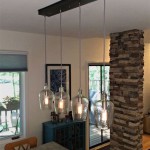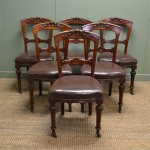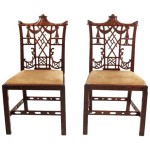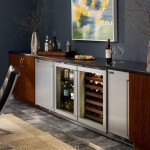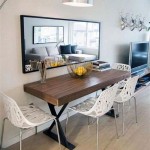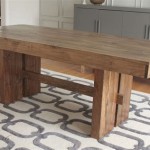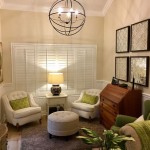How to Style a Sideboard in the Dining Room
A sideboard, also known as a buffet, is a versatile piece of furniture that can significantly enhance the functionality and aesthetic appeal of a dining room. More than just a storage unit, a well-styled sideboard can serve as a focal point, reflecting the homeowner's personal style and adding visual interest to the space. Effective sideboard styling involves careful consideration of scale, balance, and the selection of complementary decorative items. The objective is to create a cohesive and visually pleasing arrangement that enhances the overall ambiance of the dining room.
The process of styling a sideboard begins with understanding its purpose within the room. While it serves a practical function for storing dinnerware, linens, and serving pieces, its visual contribution should not be overlooked. The chosen decor should complement the existing dining room furniture, color palette, and overall design style. A carefully curated display can transform a simple sideboard into a statement piece, adding depth and character to the dining space.
Before diving into the specifics of styling, it is crucial to assess the sideboard itself. Consider its size, style, and the existing finish. A large, ornate sideboard may require a different approach compared to a smaller, minimalist design. The color and material of the sideboard should also guide the selection of decorative items. For example, a dark wood sideboard might benefit from lighter-colored accessories to create contrast, while a light-colored sideboard can handle bolder, darker accents.
Establishing a Focal Point
Creating a focal point is paramount in sideboard styling. This element immediately draws the eye and anchors the display. The focal point is typically the largest and most visually striking item in the arrangement. Common choices for a focal point include a large piece of artwork, a statement mirror, or a grouping of tall vases or candlesticks. The size of the focal point should be proportional to the size of the sideboard; a massive piece of art might overwhelm a small sideboard, while a tiny vase would get lost on a large one.
Artwork is a popular choice for a sideboard focal point. When selecting artwork, consider the style and color palette of the dining room. An abstract painting can add a modern touch, while a landscape print can create a more traditional feel. The artwork can be hung directly above the sideboard, ensuring that it is centered and hung at an appropriate height. Alternatively, the artwork can be leaned against the wall, creating a more casual and relaxed look. This approach also allows for flexibility in changing the display over time, as the artwork can be easily swapped out or repositioned.
Mirrors serve a dual purpose as focal points. They not only add visual interest but also reflect light, making the dining room feel brighter and more spacious. A large, decorative mirror can create a dramatic statement, while a simpler, rectangular mirror can offer a more understated elegance. The frame of the mirror should complement the style of the sideboard and the overall decor of the dining room. A gilded frame can add a touch of glamour, while a wooden frame can create a more rustic or natural feel.
Alternatively, a collection of tall vases or candlesticks can serve as a focal point. Varying the heights and textures of these items can create a dynamic and visually appealing arrangement. Incorporating natural elements, such as branches or flowers, can also add a touch of organic beauty to the display. The color and material of the vases and candlesticks should complement the sideboard and the surrounding decor. Metallic accents, such as gold or silver, can add a touch of sophistication, while ceramic or glass pieces can create a more casual and relaxed vibe.
Balancing Symmetry and Asymmetry
Achieving balance is critical in sideboard styling. Balance refers to the visual weight and distribution of objects within the display. A well-balanced arrangement feels harmonious and pleasing to the eye. Balance can be achieved through symmetry or asymmetry, both offering distinct aesthetic qualities.
Symmetrical arrangements create a sense of formality and order. In a symmetrical design, objects are mirrored on either side of the focal point. For example, identical lamps or vases can be placed on either end of the sideboard, creating a balanced and visually appealing display. Symmetry is often associated with traditional design styles and can create a sense of elegance and sophistication.
Asymmetrical arrangements, on the other hand, create a more relaxed and informal feel. In an asymmetrical design, objects are not mirrored on either side of the focal point, but the overall visual weight is still balanced. This can be achieved by grouping objects of different sizes and shapes, ensuring that the overall arrangement feels harmonious. For example, a tall vase on one side of the sideboard can be balanced by a grouping of smaller objects on the other side. Asymmetry is often associated with modern or eclectic design styles and can create a sense of movement and visual interest.
When creating an asymmetrical arrangement, it is important to consider the visual weight of each object. Larger objects have more visual weight than smaller objects, and darker colors have more visual weight than lighter colors. The key is to distribute the visual weight evenly across the sideboard, creating a balanced and pleasing composition. This may require some experimentation and adjustments until the desired effect is achieved.
Regardless of whether a symmetrical or asymmetrical approach is chosen, it is important to consider the negative space within the arrangement. Negative space refers to the empty areas around and between the objects. Too much clutter can make the sideboard feel overwhelming and disorganized, while too little can make it feel sparse and incomplete. The goal is to strike a balance between objects and negative space, creating a visually appealing and harmonious composition.
Incorporating Functional Elements
While aesthetics are important, the functionality of a sideboard should not be overlooked. The sideboard can be used to store and display items that are both beautiful and practical. Incorporating functional elements into the display can enhance its overall utility and appeal.
Trays are a versatile addition to a sideboard display. They can be used to corral smaller items, such as coasters, candles, or decorative objects, creating a neat and organized look. Trays also provide a convenient surface for serving drinks or appetizers. A decorative tray can add a touch of elegance to the sideboard, while a more rustic tray can create a cozy and inviting atmosphere. The material and style of the tray should complement the sideboard and the surrounding decor.
Books can also be incorporated into a sideboard display. Stacking books horizontally or vertically can add height and visual interest to the arrangement. Coffee table books with beautiful covers or spines can be particularly effective. The books can be chosen to reflect the homeowner's interests or hobbies, adding a personal touch to the display. Books can also be used to elevate other objects, such as small sculptures or plants, creating a more dynamic and layered arrangement.
Lighting can play a significant role in highlighting the sideboard display. Lamps can be placed on either end of the sideboard, providing ambient lighting and creating a warm and inviting atmosphere. Alternatively, battery-operated fairy lights can be draped around the objects, adding a touch of sparkle and whimsy. The type of lighting chosen should complement the style of the sideboard and the overall decor of the dining room. Warmer light tones tend to create a more inviting atmosphere, while cooler light tones may create a more modern and contemporary feel.
The personal touch is crucial in achieving a truly stylish sideboard. Incorporating items that hold sentimental value, such as family photos, travel souvenirs, or handmade objects, can add a unique and personal flair to the display. These items can tell a story and reflect the homeowner's personality and interests. The key is to integrate these items thoughtfully into the arrangement, ensuring that they complement the overall aesthetic and do not create a cluttered or disorganized look. The strategic placement of personal items can transform a generic sideboard display into a cherished reflection of the homeowner's life and experiences.
By carefully considering the focal point, balance, and functional elements, a sideboard can be transformed from a simple storage unit into a stylish and visually appealing centerpiece in the dining room. Ongoing adjustments and re-arrangements are encouraged to maintain a fresh and evolving aesthetic, ensuring that the sideboard continues to complement and enhance the dining room's ambiance.

How To Decorate A Buffet Sideboard Console Or Other Flat Surface Stonegable

How To Style A Dining Room Buffet Nikki S Plate

How To Style Dining Room Buffet Like A Pro Home With Keki

Dining Room Sideboard Home With Holliday

20 Dining Room Buffet Styling Ideas Lady Decluttered

How To Style Dining Room Buffet Like A Pro Home With Keki

How To Decorate A Buffet Sideboard Console Or Other Flat Surface

Decorating A Dining Room Sideboard For Christmas Home With Holliday

How To Style A Sideboard Provincial Home Living Blog

Decorating 101 How To Style A Buffet Table In 3 Easy Steps Pretty Fix

